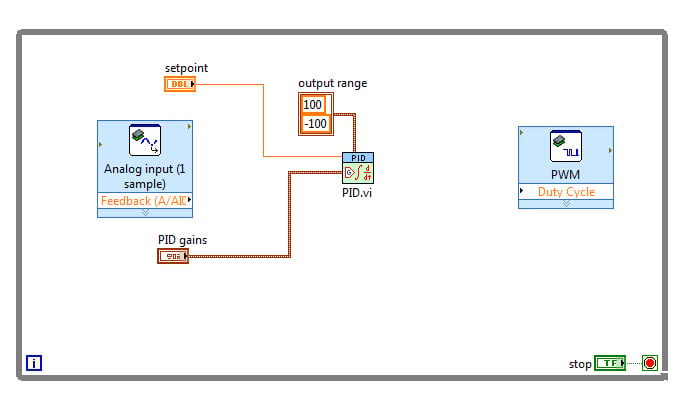
I reckon PI are most used, since derivative action is very sensitive to measurement noise, and the absence of an integral value may prevent the system from reaching its target value due to the control action. P is ofcourse the one that you starting withĪnd most of the case you will received responses from the system and have a better understanding of the system before usingĪny of the other actions like I or D depends on on desired criteria/ specs. However I havent got a chance to do that at Uni/ work. It's been awhile since I finished my Analogue and Digital Control subject but I think i did heard about the I controller. I have uploaded the overview of the experiment ( diagrams, equations, how the front panel should look finally ) and the LABVIEW VI (what I have completed so far). Any help will be appreciated be it big or small. Since I know the basics, and the fact that I need to submit the simulation soon, I request any of this forum members to help me build on this project. The block diagram is very challenging, and requires years of experience to get it done properly. I know how the system works very well, the problem I'm facing is how to implement it in LABVIEW.

I eventually got one ( thanks to Alberto Leva) which is based on a multivariable thermal system. Outline, and I had to search online for an experiment. The only software I was thought, and too only there bare basics, was LABVIEW. The topic assigned was a computer oriented project, in which I have to demonstrate any experiment on a computer software. Basically, I'm in my last year of instrumentation engineering and we have to do a project.


 0 kommentar(er)
0 kommentar(er)
